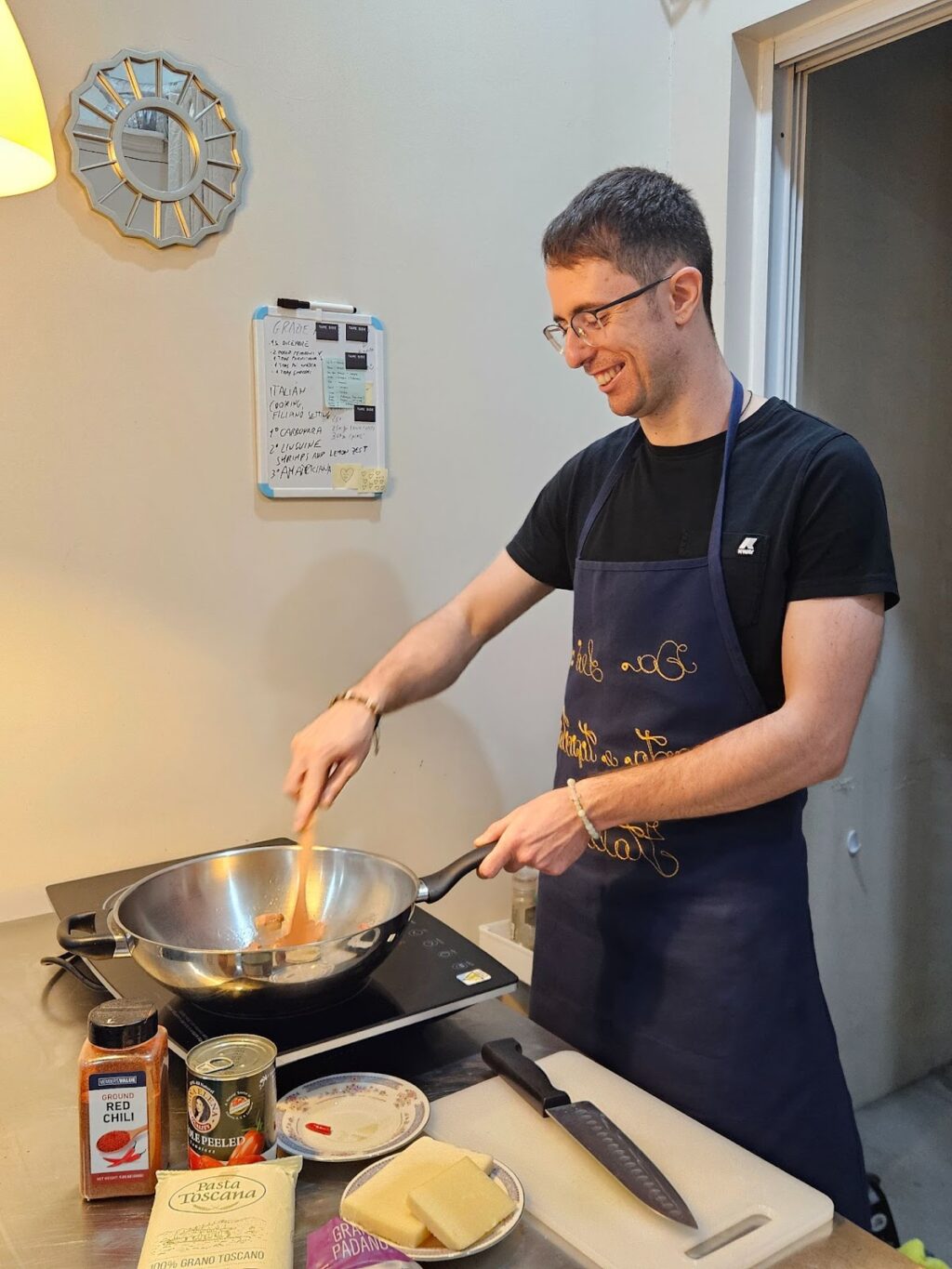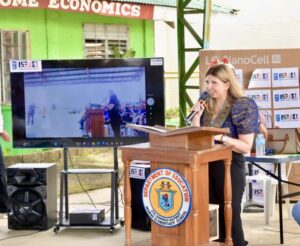
(Credit: Philippine-Italian Association, Inc.)
The Philippine-Italian Association, Inc. (PIA) is hosting its Italian Cooking Demonstration “Cuciniamo Italiano: Bringing Italian Cooking Techniques to Your Homes.” Facilitated by Chef Leonardo Maggi, Cuciniamo Italiano provides its students with a hands-on experience in cooking world-famous Italian dishes such as Spaghetti alla Puttanesca, Italian Tiramisu, and other mouth-watering Italian favorites.
Who is Leonardo Maggi?
Chef Leonardo Maggi, or “Leo,” was born and raised in the “Le Marche” region in Italy. He graduated with a degree in Psychology after Scientific High School, where his passion for cooking spontaneously emerged. After graduation, he worked for two years in his favorite restaurant near home.
His passion for cooking started because he always cooked lunch for his sister while his parents were at work. He would also watch a lot of cooking shows, especially “Gambero Rosso,” his favorite channel, where many of the best international chefs cooked. He would work for more than three years in Cremona, Italy, in one of its restaurants.
Da Leo and Cuciniamo Italiano
When he moved to the Philippines, he started to cook authentic Italian food from home and deliver it directly to customers. His “Da Leo: Pasta e Tipicita Italiane in the Philippines” received much satisfaction and nice recognition from his customers. He no longer cooks and delivers food to people’s homes. He now collaborates with the Philippine-Italian Association to share authentic Italian recipes and cuisine through the project “Cuciniamo Italiano.”

Italian Cuisine from the Eyes of Chef Leo
Chelf Leo considers Italian cuisine as simple but made of high-quality ingredients and the love of the cook who transforms them. Selecting excellent ingredients already brings you halfway through your journey with Italian cuisine. So, for Chef Leo, the first step is to always find high-quality ingredients.
These high-quality ingredients are not expensive. Chef Leo considers a mango from a little organic farm to be better than a mango found at the supermarket—it’s even cheaper! He would liken his learnings about Italian Cuisine to his experience and learnings from his grandmother.
Even when you don’t have much, Chef Leo thinks that it’s essential to be generous and not fear losing the ingredients that you have. When one cooks Italian dishes, one must do it without fear but with the generosity of someone who gives all they have.
“Italian Cuisine is often so delicious because we place great importance on eating well and with quality,” Chef Leo mentioned when asked about the uniqueness of Italian cuisine. What elevates the standard of Italian cuisine is the awareness of eating healthily and as unprocessed as possible, as Italians don’t just eat to satisfy hunger. Each dish is expected to be prepared with care, attention to detail, and quality ingredients, as diners will immediately notice the quality of the dish.
Italians have a culture that values local products, even though big industries and modern work rhythms are trying to change that mindset. In Italy, you can find 10 different types of beans or broccoli within the same region, showing the variety and uniqueness of each region’s produce.
Chef Leo’s favorite dish is Canederli with Cheese and Spinach, which is a large bread “gnocchi” filled with vegetables and cheeses. Students will learn this recipe in the upcoming Cuciniamo Italiano lesson on July 5, at the Cookery Place, BGC.
Advice for Future Chefs
“Work exists to serve, and the more you serve and love others, the more you will be rewarded,” Chef Leo claimed. For him, that reward is not visible, especially at the beginning, with little acknowledgment for our efforts, but “your soul with always be grateful and at peace for the work you’ve done,” he says.
He also advises future chefs not to focus on exotic ingredients or fancy techniques, but to rediscover and deeply study the culinary traditions of the infinite territory that is the Philippines. Chefs must use more ingredients from local farms while building good work relationships with their reliable and skilled people.
“There’s joy in building relations with producers, discovering new ingredients, experiencing freshness and authenticity,” he said. We can still improve our techniques, standards, and professionalism, but the foundation must always be local cuisine and local ingredients.



